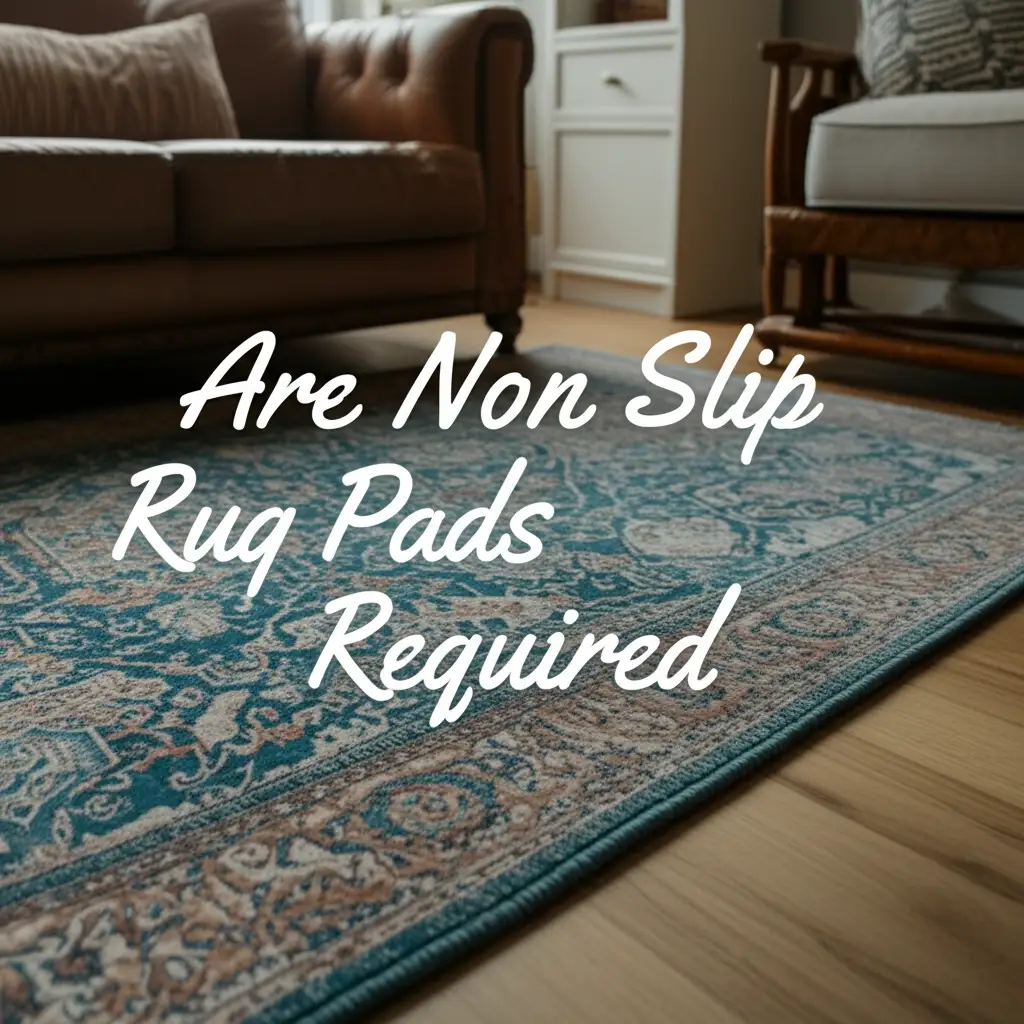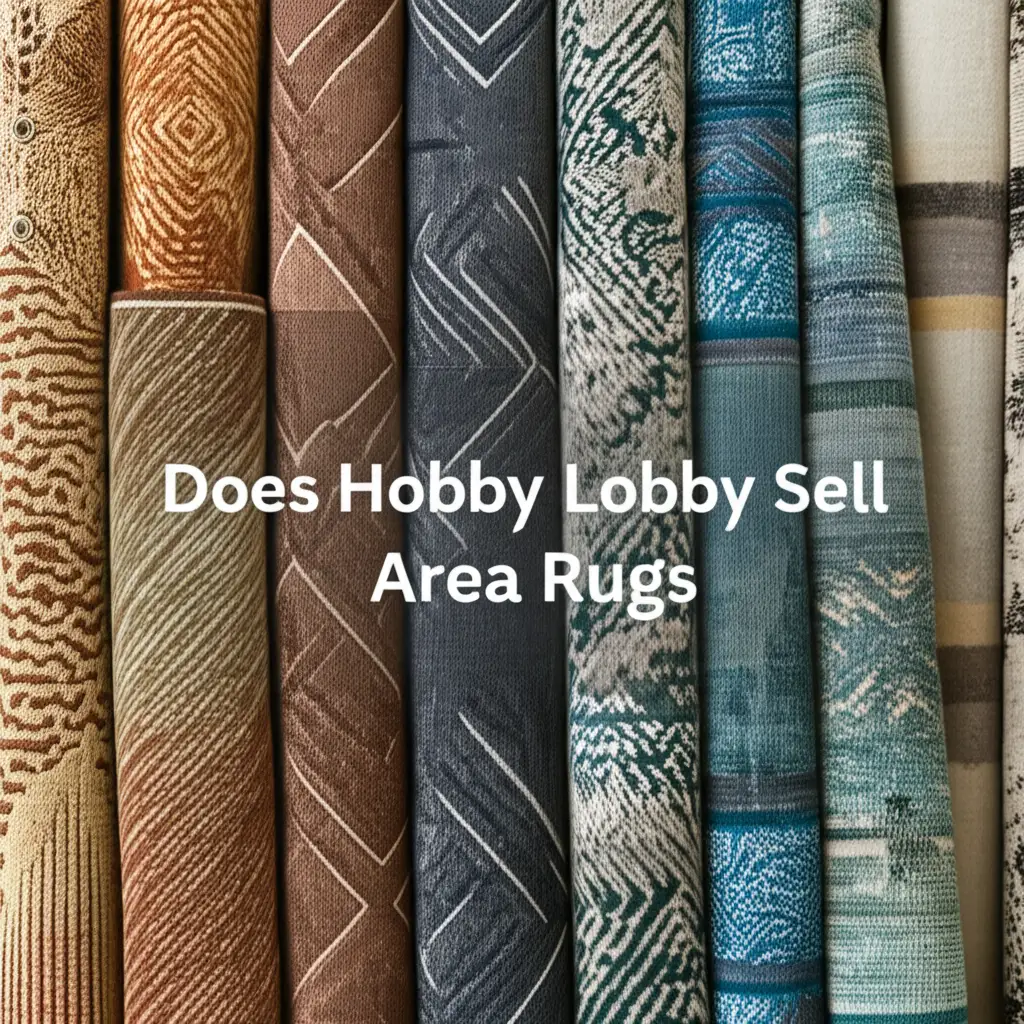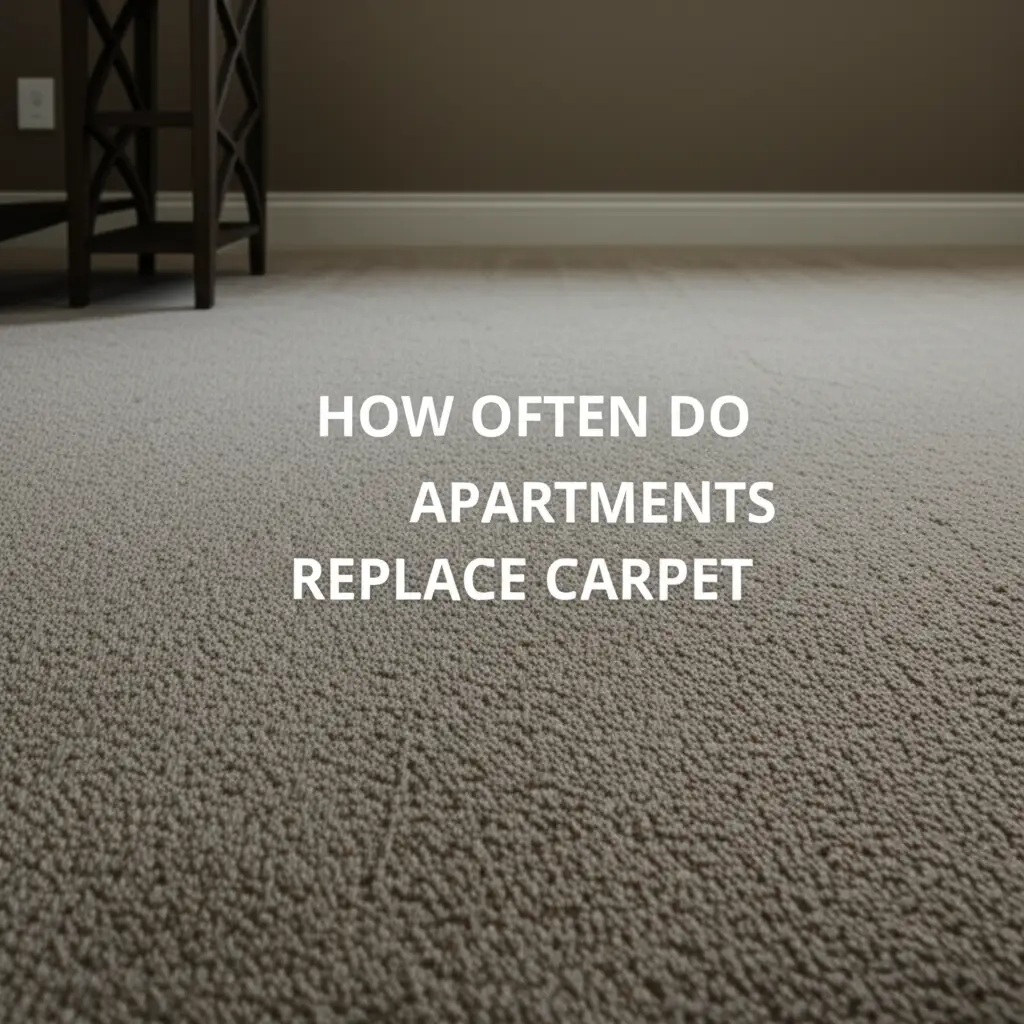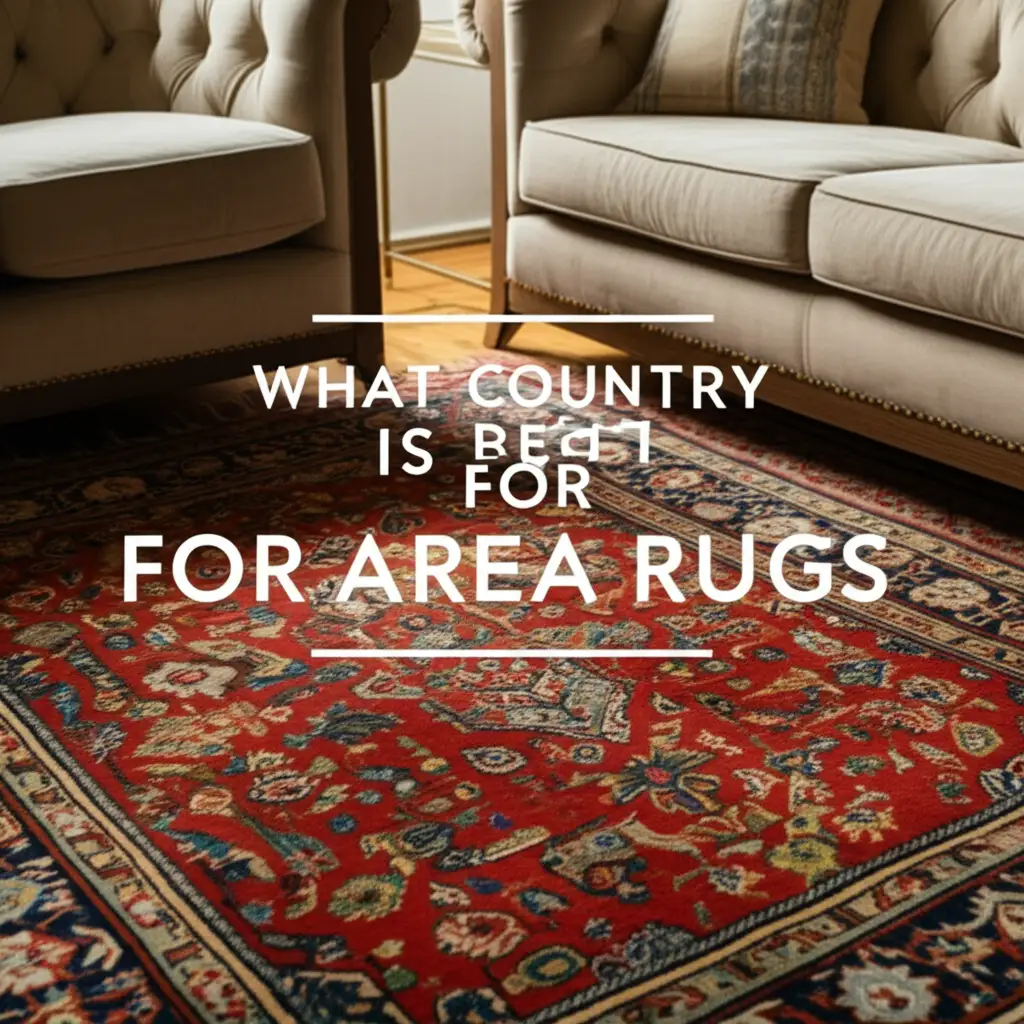· Tessa Winslow · Apartment Living · 21 min read
Are Apartments Supposed To Be Covered With Rugs In Ny
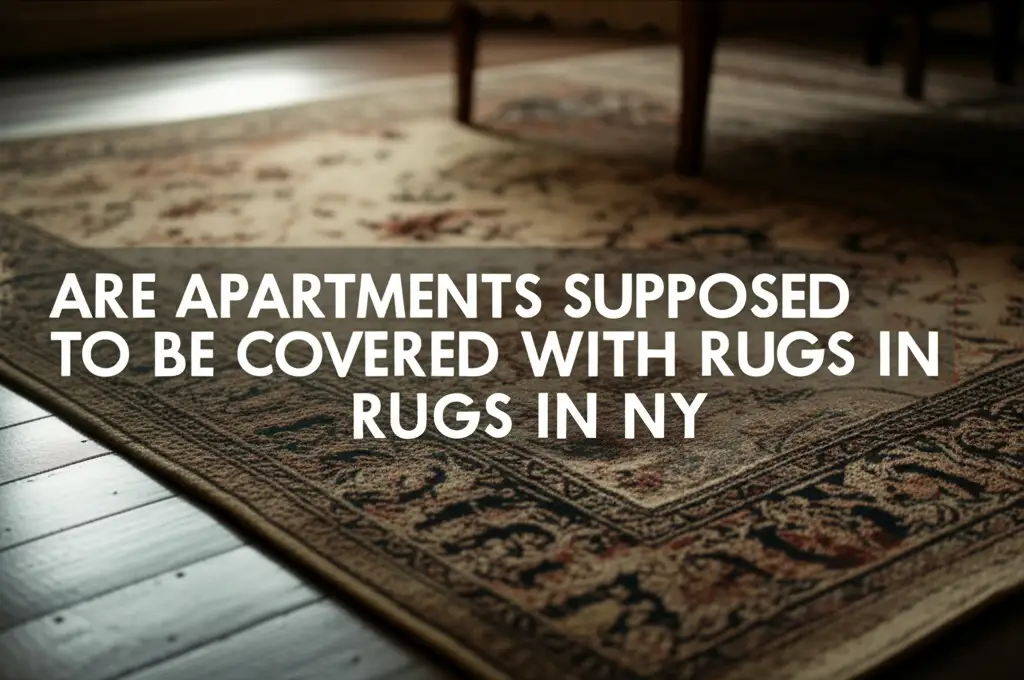
Are Apartments Supposed To Be Covered With Rugs In Ny: The Full Guide
Moving into a New York apartment brings many exciting possibilities. You think about decor, furniture, and setting up your new life. Then, a question pops into your mind: Are apartments supposed to be covered with rugs in NY? This is a common query for many residents. It touches on everything from your comfort to your relationship with neighbors.
Many New York City apartments feature hard flooring like hardwood or concrete. While beautiful, these surfaces can transmit sound easily. This means noise from footsteps, dropped items, or even pet nails can disturb those living below. Landlords often include specific clauses in leases addressing floor coverage. These rules aim to maintain peace and quiet throughout the building. This article explores why rugs are important in NY apartments, what your lease might say, and how to choose the best rugs for your space. We will also cover their many benefits and offer tips for keeping them clean.
Takeaway:
- Always check your apartment lease for specific rug requirements.
- Rugs significantly reduce noise transmission to downstairs neighbors.
- They add aesthetic value and protect hard flooring.
- Choosing the right rug size and material is key for comfort and compliance.
- Regular maintenance keeps your apartment rugs fresh and extends their life.
In many New York apartments, especially those with hard flooring, leases often require a significant portion of the floor to be covered with rugs. This is primarily to reduce noise for downstairs neighbors and protect the building’s infrastructure.
The New York Apartment Landscape and Rugs
New York City apartments are known for many things, including their diverse flooring types. Many units feature beautiful hardwood floors. Others might have classic concrete, tile, or even older linoleum. While these surfaces offer a clean look, they also pose a unique challenge. Sound travels very easily across hard surfaces. This is where rugs become very important.
When I first moved into my own New York apartment, I quickly learned about the noise factor. Every step, every dropped item, seemed to echo. I could even hear my upstairs neighbors’ movements quite clearly. This open sound transmission is a common complaint in multi-story buildings. Rugs act as a crucial barrier. They absorb sound waves. This stops the sound from traveling through the floor to the apartment below. It helps create a quieter environment for everyone. Think of it as a natural soundproofing solution for your home. Rugs make your living space feel more private and peaceful. They are truly essential for harmonious apartment living in a dense city like New York.
Understanding Common NYC Flooring Types
Most New York apartments come with either hardwood floors, concrete, or sometimes tile. Hardwood is popular for its warmth and classic appeal. However, it offers little in terms of sound absorption. Concrete floors, especially in loft-style apartments, are very durable. But they are excellent at transferring impact noise. Tile is common in kitchens and bathrooms. It also reflects sound rather than absorbing it. Knowing your floor type helps you understand the immediate need for rugs. Rugs can transform these hard, reflective surfaces into cozy, sound-dampening areas. This improves the overall acoustic comfort of your apartment.
Why Noise Reduction is Paramount in NYC
Living in New York means living close to others. Buildings are often dense. Walls and floors are sometimes thin. This makes noise a constant challenge. Impact noise, like footsteps, is especially problematic. It travels directly through the building structure. Landlords and building management know this. They want to prevent disputes between residents. That is why many leases include specific rules about floor coverings. Rugs help maintain peace. They show consideration for your neighbors. It is a simple way to contribute to a better living experience for everyone in your building.
Landlord and Lease Agreements: What to Check
Before you even think about buying rugs, you must read your lease agreement very carefully. This document is the ultimate guide to your responsibilities as a tenant. Many New York apartment leases contain specific clauses about floor coverings. These clauses are not just suggestions. They are binding rules. Ignoring them can lead to serious problems. I always advise checking this first.
The most common requirement relates to noise reduction. Landlords want to protect other tenants from excessive noise. Hardwood floors, for example, can make a lot of noise with every step. Your lease might specify a certain percentage of your floor space that must be covered by rugs. It might say something like “80% of all hard flooring must be covered.” Or, it could simply state that “sufficient floor coverings must be used to minimize noise.” Some leases are very detailed. They might even specify which rooms need rugs. Make sure you understand these rules clearly. If you are unsure, ask your landlord or building manager for clarification. Complying with these rules keeps you in good standing. It also ensures a peaceful living environment for your neighbors. For related insights on property maintenance, you might find information on how often do apartments replace carpet useful.
Decoding Lease Clauses on Floor Coverings
Lease agreements can use different wording. Some are very direct. They state a specific percentage, like “at least 75% of all hard-surfaced floors must be covered by rugs or carpeting.” Other leases might be vaguer. They may use terms like “adequate floor coverings” or “reasonable measures to prevent noise.” If your lease is vague, ask your landlord for a written clarification. This protects you later. Understanding the exact requirement is crucial. It helps you avoid potential lease violations. It ensures you select rugs that meet the building’s standards.
The Consequences of Non-Compliance
Ignoring your lease’s rug requirements can lead to serious issues. First, your downstairs neighbors might complain about noise. These complaints can escalate quickly. Second, your landlord could issue a notice to cure. This is a formal warning to fix the violation. If you do not comply, you could face penalties. This might include fines. In severe cases, it could even lead to eviction proceedings. It is always better to meet the requirements from the start. This maintains a good relationship with your landlord and your neighbors. It gives you peace of mind in your apartment.
The Role of Rugs in Noise Reduction in NY Apartments
Living in a densely populated city like New York means close quarters. Noise, especially impact noise, is a common issue. This is where rugs play a vital role. They are not just decorative items. They are powerful tools for acoustic comfort. When I first moved to New York, I noticed every step from my upstairs neighbor. I quickly realized how much sound travels through floors. Adding rugs made a huge difference, not just for my neighbors but for my own peace of mind.
Rugs absorb sound waves. Hard surfaces like wood or concrete reflect sound. This creates echoes and allows noise to travel freely. A rug, especially one with a thick pile and a good rug pad, acts as a buffer. It dampens the sound of footsteps, dropped objects, and even the natural acoustics of a room. This reduces what is known as “impact noise.” Impact noise is the direct transfer of vibrations through the building structure. Imagine a bowling ball dropping on the floor above you. Without a rug, that sound goes right through. With a rug, much of that energy is absorbed. This makes your apartment quieter for you. More importantly, it significantly reduces the noise heard by your downstairs neighbors. This simple addition can prevent many common neighbor disputes. It creates a more pleasant living environment for everyone in the building. Choosing the right rug can be a step towards better communal living. You can also get more ideas about using rugs to enhance your living space by checking out resources on how to use rugs to decorate.
How Rugs Absorb Sound Waves
Rugs are made of fibers. These fibers have tiny air pockets. When sound waves hit a rug, they get trapped and absorbed by these fibers and air pockets. This process converts sound energy into small amounts of heat. As a result, less sound energy reflects back into the room. Even less passes through the floor to the unit below. Thicker rugs with denser piles are more effective at sound absorption. A rug pad placed underneath further enhances this effect. The pad adds another layer of cushioning and density. This combination creates a superior barrier against noise.
Impact Noise vs. Airborne Noise
It is important to understand the difference. Airborne noise travels through the air. Examples include conversations, music, or television sounds. Rugs can help reduce airborne noise within a room by absorbing echoes. However, their primary benefit in apartments is against impact noise. Impact noise comes from direct contact with the floor. This includes footsteps, items dropped, or furniture moving. This type of noise travels through the building’s structure. Rugs are highly effective at dampening this specific kind of noise. This makes them essential for apartment living where quiet enjoyment is expected. Considering what type of rug best suits your needs for sound reduction can also involve exploring what type of area rugs are best for carpet for further insights.
Beyond Noise: Aesthetic and Practical Benefits of Rugs
While noise reduction is a major reason for rugs in New York apartments, their benefits extend far beyond that. Rugs are powerful design tools. They can transform the look and feel of your entire living space. I have personally seen how a well-chosen rug can make a room feel complete. It can add so much character and warmth to a sterile apartment.
Rugs help define spaces within an open floor plan. In a studio apartment, for instance, a rug can clearly mark the “living area” from the “sleeping area.” This creates distinct zones without needing walls. They also add color, texture, and pattern to a room. This adds visual interest and can pull together a whole design scheme. Beyond aesthetics, rugs offer practical advantages. They protect your floors from scratches and wear. This is especially important for hardwood floors. They also provide a soft, warm surface underfoot. This is a welcome comfort, especially in older buildings with cold floors. Rugs tie a room together. They make it feel more cohesive and inviting. They are truly an investment in both style and functionality for your apartment. If you are exploring creative ways to use them, consider looking into how to use two rugs in one room for inspiration.
Enhancing Your Apartment’s Style
Rugs are like art for your floor. They can set the mood for a room. A vibrant rug can add a pop of color and energy. A neutral, textured rug can create a calming and sophisticated atmosphere. You can use rugs to introduce patterns or complement existing furniture. They anchor your furniture arrangement. This creates a cohesive look. Without a rug, a room with hardwood floors can often feel cold and sparse. A rug instantly adds warmth and makes the space feel more lived-in and comfortable. It is an easy way to express your personal style. For general home decor inspiration, consider how do living rooms need rugs impacts overall design.
Protecting Your Investment
Your apartment’s flooring is a valuable asset, whether it belongs to you or your landlord. Hardwood floors can easily get scratched by furniture, pet claws, or even everyday foot traffic. Rugs provide a protective barrier. They absorb the impact of dropped items. They prevent scuffs and wear marks. This extends the life of the flooring underneath. For tenants, this is important. It helps you avoid potential charges for floor damage when you move out. For landlords, it means less wear and tear on their property. This saves money on repairs and refinishing. It is a win-win situation.
Adding Comfort and Warmth
Imagine stepping out of bed onto a cold, hard floor on a winter morning. Now imagine stepping onto a soft, plush rug. The difference is huge! Rugs add a layer of insulation. They make your apartment feel warmer and cozier. This is especially true for apartments with concrete or tile floors. They are also much softer underfoot. This adds comfort to your daily life. It makes your living space more inviting. This tactile comfort can greatly enhance your quality of life in your apartment.
Choosing the Right Rugs for Your New York Space
Selecting the perfect rug for your New York apartment involves more than just picking a color you like. You need to consider size, material, and how it will function in your specific space. I always tell people to start by measuring their rooms carefully. This is the most crucial first step. A rug that is too small can make a room feel disjointed. A rug that is too large can overwhelm it.
For living rooms, the general rule is that at least the front two legs of your main furniture pieces (sofa, armchairs) should rest on the rug. This anchors the space and makes it feel cohesive. For dining rooms, the rug should be large enough for all chair legs to remain on the rug, even when pulled out from the table. In bedrooms, the rug should extend past the sides of the bed by at least 18 inches. This ensures a soft landing when you step out of bed. Material choice is also very important. Wool rugs are durable, soft, and excellent for noise absorption. Synthetic rugs like polypropylene are budget-friendly and easy to clean. Cotton rugs are good for lighter use areas. Always remember to buy a good quality rug pad. The pad prevents the rug from slipping. It also adds extra cushioning and noise reduction. This makes your rug safer and more effective.
Understanding Rug Sizes and Placement
Correct sizing is essential for both aesthetics and noise reduction. In a living room, aim for a rug that allows the front legs of your sofa and armchairs to sit on it. This creates a unified seating area. For dining rooms, choose a rug large enough so that chairs remain on the rug even when pulled out. This prevents chairs from catching on the rug’s edge. In bedrooms, a large area rug under the bed is ideal. It should extend at least 18-24 inches beyond the sides and foot of the bed. This provides a soft surface when you get out of bed. Proper placement ensures maximum coverage for noise reduction. It also ties the room together visually.
Material Matters: Durability and Sound Absorption
Different rug materials offer various benefits.
- Wool: This is a top choice for durability, softness, and excellent sound absorption. Wool rugs are also naturally stain-resistant and fire-retardant. They are an investment but last a long time.
- Synthetic (e.g., Polypropylene/Olefin): These rugs are budget-friendly, highly stain-resistant, and easy to clean. They offer good durability and some sound absorption. They are a practical choice for high-traffic areas.
- Cotton: Cotton rugs are soft, washable, and affordable. They are lighter and offer less sound absorption than wool. They are best for bedrooms or lower-traffic areas.
- Jute/Sisal: These natural fiber rugs are very durable and add a natural texture. However, they are not as soft underfoot and offer less sound absorption.
- Silk/Viscose: These are luxurious and soft, but often delicate and not ideal for high-traffic or noise reduction purposes.
The Importance of a Quality Rug Pad
A rug pad is not optional. It is crucial.
- Prevents Slipping: A non-slip pad keeps your rug firmly in place, preventing accidents.
- Adds Cushioning: It makes the rug feel softer and more luxurious underfoot.
- Enhances Noise Reduction: The extra layer adds significant sound-dampening properties.
- Protects Floors: It creates a barrier between the rug and your hard floor. This prevents scratches and abrasion.
- Extends Rug Life: The pad reduces wear and tear on the rug fibers by absorbing impact. Always choose a pad that is slightly smaller than your rug’s dimensions. It should be about an inch shorter on all sides. This keeps the pad hidden underneath.
Maintaining Your Apartment Rugs in a Busy City
Living in a busy city like New York means your apartment rugs will see a lot of action. Dust, dirt, and spills are part of daily life. Proper maintenance is key to keeping your rugs looking good and lasting longer. I have learned that a little regular effort goes a long way. This also ensures they continue to fulfill their noise-reduction role.
Regular vacuuming is the simplest and most important step. Aim to vacuum your rugs at least once or twice a week, more often if you have pets or heavy foot traffic. Use a vacuum with strong suction. Adjust the beater bar height if your vacuum has that feature, especially for high-pile rugs. For spills, act quickly. Blot, do not rub. Use a clean cloth and a gentle cleaning solution appropriate for your rug material. Rotating your rugs periodically helps ensure even wear. Professional cleaning is essential every 12-18 months. This gets rid of deep-seated dirt and allergens that regular vacuuming misses. This routine keeps your rugs fresh, hygienic, and performing well. For specific guidance on how to keep your rugs clean, resources like how to clean area rugs inside offer valuable tips.
Regular Cleaning Routines for Longevity
Consistent care preserves your rug’s beauty and function.
- Vacuum Frequently: At least weekly, or daily in high-traffic areas. This removes surface dirt before it settles deep into the fibers.
- Rotate Periodically: Turn your rug 180 degrees every 6-12 months. This ensures even wear and prevents one area from fading more than another due to sunlight or foot traffic.
- Shake Out Small Rugs: For smaller rugs, take them outside and give them a good shake. This dislodges trapped dirt.
- Address Spills Immediately: Time is critical for spills. Blot the spill with a clean, dry cloth. Never rub, as this can push the stain deeper or damage fibers. Follow up with a mild, appropriate cleaning solution if needed. Always test in an inconspicuous area first.
Professional Cleaning Services in NYC
Even with diligent home care, rugs need professional cleaning. New York City environments contribute to dirt and grime build-up. Professional cleaners have specialized equipment and knowledge. They can deeply clean your rug without damaging its fibers. They remove embedded dirt, allergens, and odors that home vacuums cannot reach. This extends the life of your rug significantly. It also keeps your home healthier. Aim for professional cleaning every 12 to 18 months, or more often for high-traffic rugs or if you have allergies. This investment pays off in the long run.
Dealing with Specific Rug Challenges
Apartment living can present unique rug challenges.
- Pet Accidents: Blot immediately. Use an enzymatic cleaner specifically designed for pet stains and odors. Ensure the area is completely dry to prevent mold.
- High Traffic Lanes: Place runners in hallways or areas that experience constant foot traffic. This protects your main area rugs.
- Pests (Moths): Moths can damage wool rugs. Regular vacuuming helps. If you suspect moths, consult a professional rug cleaner. You can find more information on handling such issues, like how to get rid of months in wool rugs. Keep your home clean and dry. Store rugs properly if not in use.
Common Misconceptions About Rugs in NYC Apartments
When considering whether apartments are supposed to be covered with rugs in NY, you might hear various opinions. There are many common myths about rugs that can deter people. I have encountered several of these myself. It is important to address them head-on. This way, you can make an informed decision for your home.
One common misconception is that rugs are high-maintenance or hard to clean. Many people think they will just collect dust and make allergies worse. In reality, rugs can trap allergens, preventing them from circulating in the air. Regular vacuuming removes these trapped particles. Another myth is that rugs are old-fashioned or will make your small apartment look even smaller. This is far from the truth. A well-chosen rug can actually make a room feel larger and more cohesive. It can add modern style and vibrancy. Some people also believe rugs are an unnecessary expense. However, when you consider their benefits—noise reduction, floor protection, and aesthetic enhancement—they are a valuable investment. They can even save you money by preventing potential lease violations or floor damage charges. Understanding the truth about rugs helps you appreciate their true value in a New York apartment. If you eventually decide to replace old ones, knowing what to do with old area rugs in NY can be helpful.
Rugs are Hard to Clean and Unhygienic
This is a popular myth. People worry rugs trap dirt and allergens. While rugs do trap these things, this is actually a benefit. Instead of allergens circulating in the air, they are held within the rug fibers. Regular vacuuming effectively removes these trapped particles. Modern vacuums are powerful. Many have HEPA filters to capture even tiny allergens. For deeper cleaning, professional rug cleaning services are available. These services can remove deep-seated dirt, dust mites, and allergens. A properly maintained rug is often cleaner than a hard floor, where dust can simply be blown around.
Rugs Make Small Apartments Look Smaller
Many people living in small New York apartments fear that a large rug will make their space feel cramped. This is usually not true. In fact, a single, appropriately sized rug can actually define an area and make a room feel more organized and spacious. A rug helps anchor furniture. It creates a visual boundary. This tricks the eye into seeing distinct zones within a small or open-plan apartment. When a rug is too small, it can float in the middle of a room and make the space feel disconnected. A larger rug that reaches under furniture, on the other hand, creates a sense of expansion and cohesion.
Rugs are Only for Aesthetic Purposes
While rugs certainly enhance a room’s aesthetic appeal, their function extends far beyond decoration. As we have discussed, their primary practical benefit in apartments is noise reduction. They absorb impact sound. This greatly benefits downstairs neighbors. Additionally, rugs provide insulation, making rooms feel warmer in winter. They protect valuable flooring from scratches, dents, and general wear and tear. They also add a layer of comfort underfoot. So, while they look good, their practical benefits are just as significant, if not more so, in a busy apartment building.
FAQs
Q1: Is it legally required to have rugs in NYC apartments?
No, it is not a city-wide legal requirement. However, many individual apartment leases and building bylaws in New York City do require rugs. This is especially true for apartments with hard flooring. Landlords implement these rules to reduce noise transfer between units. Always check your specific lease agreement. This will tell you if your apartment requires rugs.
Q2: What percentage of my floor should a rug cover?
The exact percentage varies by lease. A common requirement is for 75% to 80% of hard flooring in living areas and bedrooms to be covered. Some leases may just state “sufficient coverage.” The goal is to minimize noise. A good rule of thumb is to have area rugs large enough to anchor your main furniture pieces.
Q3: Do rugs really reduce noise for downstairs neighbors?
Yes, absolutely. Rugs significantly reduce impact noise, such as footsteps, dropped items, and furniture moving. They absorb sound waves. This prevents these vibrations from traveling through the floor to the apartment below. A thick rug with a quality rug pad provides the best noise reduction.
Q4: How do I know what my lease says about rugs?
Read your apartment lease agreement carefully. Look for clauses related to “floor coverings,” “noise reduction,” “hardwood floors,” or “carpeting requirements.” If the language is unclear, contact your landlord or building management. Ask for written clarification to ensure you comply.
Q5: Can I use small rugs or runners instead of large area rugs?
For noise reduction purposes, large area rugs are generally more effective than small rugs or runners. Small rugs cover less surface area. They absorb less sound. If your lease specifies a coverage percentage, small rugs likely won’t meet the requirement for larger rooms. Runners can be useful in hallways for protection and some noise dampening.
Q6: How often should apartment rugs be cleaned?
Regular vacuuming should happen at least once or twice a week. This removes surface dirt. Professional cleaning is recommended every 12 to 18 months. This removes deeply embedded dirt and allergens. More frequent cleaning may be needed for rugs in high-traffic areas or if you have pets or allergies.
Conclusion
Understanding whether apartments are supposed to be covered with rugs in NY is important for apartment living. As we have discussed, while not a universal legal mandate, many New York apartment leases require significant floor coverage with rugs. This is primarily to reduce noise. It also helps protect the building’s flooring. My own experience has shown me the immense difference a well-placed rug can make. It truly creates a more peaceful and comfortable home.
Rugs offer a multitude of benefits. They absorb sound, preventing impact noise from disturbing your downstairs neighbors. They protect your beautiful hardwood or concrete floors from wear and tear. They also add warmth, comfort, and style to your living space. From defining zones in a studio to adding a splash of color, rugs are incredibly versatile. When choosing rugs, always check your lease first. Then, consider size, material, and invest in a good rug pad. Proper maintenance, including regular vacuuming and professional cleaning, will keep your rugs looking great for years. Embracing rugs in your New York apartment is a smart choice. It improves your living experience and fosters better relationships with your neighbors. So go ahead, find the perfect rug to make your New York apartment truly feel like home.


